The 1924 Peace Silver Dollar’s value varies by mint mark and condition. Philadelphia coins (no mint mark) range from $25-$35 in circulated condition and $45-$125 uncirculated. The scarcer 1924-S (San Francisco) commands $30-$45 circulated and $150-$400 uncirculated, with high-grade examples reaching thousands due to lower mintage. The “V” in “TRUST” is a standard design feature, not an error. Professional grading is recommended for precise valuation, as the 1924-S’s numismatic value significantly exceeds its silver melt value.
The 1924 Peace Silver Dollar represents one of the most intriguing years in the Peace Dollar series, not because of its rarity, but because of the dramatic value difference between its two mint mark varieties. While Philadelphia churned out over 11 million pieces, San Francisco’s limited production of just 1.7 million coins created a scarcity that collectors still chase today. Understanding the difference between these varieties, their true market values, and the common misconceptions about errors can mean the difference between accepting $30 or realizing you hold a $400+ treasure.
Understanding the 1924 Philadelphia Peace Dollar
The 1924 Peace Dollar struck at the Philadelphia Mint carries no mint mark on the reverse, just below the eagle’s tail feathers. With a substantial mintage of 11,811,000 pieces, this variety represents the most common version from this year. Despite its higher production numbers, the 1924 Philadelphia dollar still commands premiums above its silver melt value due to collector demand.
In average circulated condition, these coins typically grade between Good-4 and Very Fine-30. At these lower grades, you can expect values ranging from $25 to $35, according to Heritage Auctions pricing data from 2023. The silver content alone accounts for approximately $18-$20 of this value based on current precious metal markets, meaning the numismatic premium adds only a modest $7-$15 for worn examples.
The value proposition changes dramatically for uncirculated specimens. A 1924 Peace Dollar grading MS-60 (the minimum uncirculated grade) starts around $45-$55. Move up to MS-63, and values climb to $75-$95. The sweet spot for collectors often lies at MS-64, where examples trade for $100-$150. Premium gem specimens grading MS-65 command $400-$600, while the rare MS-66 examples can exceed $2,000 at major auctions.
Here’s the detailed value breakdown for Philadelphia strikes:
| Grade | Condition Description | Value Range |
|---|---|---|
| G-4 | Heavily worn, major details visible | $25-$28 |
| F-12 | Moderate wear, all major details clear | $28-$32 |
| VF-30 | Light to moderate wear, most details sharp | $32-$35 |
| AU-50 | Slight wear on highest points | $40-$50 |
| MS-60 | Uncirculated with noticeable marks | $45-$55 |
| MS-63 | Choice uncirculated, attractive luster | $75-$95 |
| MS-64 | Near-gem, minimal marks | $100-$150 |
| MS-65 | Gem quality, exceptional eye appeal | $400-$600 |
| MS-66 | Premium gem, extremely rare | $2,000-$3,500 |
The 1924-S San Francisco Rarity Factor
The San Francisco Mint’s 1924-S Peace Dollar tells a completely different story. With only 1,728,000 pieces struck, this variety immediately became one of the scarcer regular-issue Peace Dollars. The “S” mint mark appears on the reverse below the eagle, clearly distinguishing it from its Philadelphia counterpart. This lower mintage, combined with heavy circulation in Western states, means fewer high-grade survivors exist today.
Circulated 1924-S dollars start at $30-$35 for heavily worn Good-4 examples, already showing a premium over Philadelphia strikes. Fine-12 specimens trade for $35-$40, while Very Fine-30 coins reach $40-$45. The jump to About Uncirculated (AU-50 to AU-58) pushes values to $55-$75, reflecting the difficulty in finding pieces that escaped heavy circulation.
The uncirculated market for 1924-S dollars reveals the true collector demand. MS-60 examples begin around $150-$200, more than triple their Philadelphia equivalents. MS-63 specimens command $250-$350, while MS-64 pieces trade for $400-$650. Gem MS-65 examples represent serious rarities, with auction records showing $1,200-$2,500 depending on eye appeal and strike quality.
The most exceptional 1924-S Peace Dollars grading MS-66 or higher enter the realm of serious numismatic treasures. A PCGS MS-66 specimen sold through Heritage Auctions in January 2023 realized $9,600, while a spectacular MS-67 example achieved $48,000 in a 2022 auction. These premium prices reflect the extreme rarity of 1924-S dollars with full luster, minimal bag marks, and strong strikes.
San Francisco Peace Dollar value chart:
| Grade | Value Range | Relative Availability |
|---|---|---|
| G-4 | $30-$35 | Common |
| F-12 | $35-$40 | Common |
| VF-30 | $40-$45 | Readily available |
| AU-50 | $55-$65 | Available with searching |
| AU-58 | $65-$75 | Scarce but obtainable |
| MS-60 | $150-$200 | Scarce |
| MS-63 | $250-$350 | Very scarce |
| MS-64 | $400-$650 | Rare |
| MS-65 | $1,200-$2,500 | Very rare |
| MS-66 | $5,000-$12,000 | Extremely rare |
| MS-67 | $30,000-$50,000 | Museum quality |
Debunking the “TRVST” Error Myth
One of the most persistent misconceptions about Peace Dollars involves the word “TRUST” on the reverse, which appears as “TRVST” using the letter “V” instead of “U.” New collectors frequently believe they’ve discovered a rare error when encountering this feature, but the reality disappoints these hopes.
The use of “V” for “U” represents an intentional design choice, not a minting error. Designer Anthony de Francisci deliberately employed this Classical Latin styling throughout the Peace Dollar series from 1921 through 1935. In ancient Roman inscriptions, the letter “U” didn’t exist as a separate character; instead, “V” served double duty for both sounds. This classical numismatic tradition appears on numerous coins and monuments.
Every single Peace Dollar from every year and mint facility displays “TRVST” in identical fashion. The 1924 Philadelphia and 1924-S examples both feature this styling, as do the 1922, 1923, 1925, and all subsequent years. Because this characteristic appears on millions of coins, it carries absolutely zero premium value. Atlanta Gold & Coin Buyers and JustAnswer both confirm that collectors regularly inquire about this “error,” only to learn it’s a standard design element worth no more than typical examples.
Understanding this distinction helps collectors avoid overpaying for common coins misrepresented as errors. If someone claims a 1924 Peace Dollar with “TRVST” is rare or valuable because of this feature, they’re either misinformed or deliberately misleading. The coin’s value depends entirely on its mint mark, condition, and any legitimate minting errors—not this intentional design choice.
Genuine Errors Worth Finding on 1924 Peace Dollars
While the “TRVST” feature isn’t an error, legitimate minting varieties do exist for 1924 Peace Dollars and can significantly increase value. These authentic errors occurred during the striking process and affect only small percentages of the mintage.
Die cracks and cuds represent the most commonly encountered errors. As dies aged and developed stress fractures, raised lines appeared on struck coins. Minor die cracks add modest premiums of $5-$15 depending on prominence. Major die breaks creating “cuds” (raised blobs where metal flowed into broken die areas) can add $50-$200 to a coin’s value, particularly on higher-grade examples.
Off-center strikes occur when the planchet wasn’t properly centered between the dies during striking. Minor misalignments of 3-5% add $25-$75, while dramatic off-center errors showing 10-15% displacement can command $200-$500 or more. The 1924 Philadelphia Mint produced several documented off-center strikes, though they remain quite scarce.
Clipped planchets resulted from improperly punched blanks that overlapped previous punches. Straight clips typically add $30-$75, while curved clips from the edge of the metal strip can bring $50-$150. The clip must be substantial and clearly visible to command these premiums.
Double die varieties show doubling in the design elements due to hub impressions being slightly offset during die production. No major double die varieties are currently recognized for 1924 Peace Dollars in either Philadelphia or San Francisco production, but minor doubling on date digits or letters occasionally appears and adds $15-$40 for noticeable examples.
Strike-through errors happen when foreign material (grease, cloth, wire) gets between the die and planchet. These create missing design areas or unusual textures. Depending on size and location, strike-throughs add $25-$150 to value.
Lamination errors occur when impurities in the silver planchet cause layers to separate or peel. These defects typically reduce rather than increase value unless particularly dramatic, in which case they might add $20-$50 for error collectors.
For any error to command premium pricing, it must be significant enough to notice easily and dramatic enough to appeal to error collectors. Minor imperfections, light scratches, or post-mint damage don’t qualify as mint errors and actually reduce value below normal examples.
Professional Grading: When It Makes Financial Sense
The decision to submit a 1924 Peace Dollar for professional grading through PCGS or NGC involves weighing costs against potential value increase. Professional grading costs $20-$50 per coin depending on service level and turnaround time, so the coin must be worth enough to justify this expense.
For 1924 Philadelphia dollars, professional grading rarely makes sense for circulated examples. A coin worth $30-$35 in any circulated grade won’t benefit from a $35 grading fee. Even AU-50 pieces worth $40-$50 represent marginal candidates. The breakeven point typically occurs around MS-63 or better, where the difference between raw and graded prices creates enough spread to cover costs.
A raw 1924 MS-64 might sell for $100-$120 due to buyer uncertainty about actual grade, while a PCGS or NGC MS-64 holder commands $125-$150 with confidence. The $25-$30 premium covers the grading cost and provides buyer assurance. MS-65 examples show even wider spreads—raw specimens struggle to exceed $300-$350, while certified gems readily achieve $400-$600.
The 1924-S San Francisco variety justifies professional grading at lower grade levels due to higher values. Even AU-58 examples worth $65-$75 benefit from certification since many altered or cleaned coins get passed off as authentic. Uncirculated 1924-S dollars should almost always receive professional grading—the difference between MS-60 and MS-64 represents hundreds of dollars, and only expert graders can make these distinctions reliably.
For any suspected error coins, professional authentication becomes essential. Third-party grading services identify genuine errors versus post-mint damage, ensuring you don’t overpay for worthless damaged coins or undersell valuable errors. Many auction houses and serious dealers won’t purchase claimed error coins without professional certification.
Smart Buying Strategies for 1924 Peace Dollars
Building a quality 1924 Peace Dollar collection requires understanding market dynamics and avoiding common purchasing pitfalls. The wide price range between grades and mint marks creates opportunities for both excellent value and expensive mistakes.
For Philadelphia strikes, the best value proposition exists in the MS-63 to MS-64 range. These coins cost $75-$150 but offer the complete uncirculated experience—full luster, sharp strikes, and minimal wear—without the exponential premium jumps of MS-65 gems. Circulated examples below VF-30 represent poor value since they cost only slightly less than nicer XF-45 or AU-50 pieces.
When pursuing 1924-S dollars, patience pays dividends. The market for these coins can swing $50-$100 based on auction timing and buyer competition. MS-63 examples sometimes appear at $225-$250 during slower sales periods, while identical coins might reach $350 during major auctions with aggressive bidding. Setting price alerts through major dealers and monitoring multiple auction houses helps identify opportunities.
Avoid raw (uncertified) coins claiming MS-64 or higher grades unless you possess expert grading skills. Sellers frequently overgrade raw coins by 1-2 points, meaning that “MS-65” actually grades MS-63 upon submission. This two-point difference represents hundreds or thousands of dollars in value. When buying uncertified high-grade material, assume it grades one point lower than claimed and pay accordingly.
Beware of cleaned or artificially toned coins, which plague the Peace Dollar market. Cleaning destroys the original mint luster and leaves hairline scratches visible under magnification. Professional grading services designate cleaned coins as “Details” grades worth 30-50% less than problem-free examples. Similarly, artificial toning through chemical treatment or heating creates unnatural colors that reduce value despite sometimes attractive appearance.
Purchase from reputable dealers who offer return privileges and guarantee authenticity. Major auction houses like Heritage, Stack’s Bowers, and Great Collections provide extensive photography, professional grading, and buyer protections. Online marketplaces and local coin shows offer opportunities for bargains but require significantly more expertise to navigate safely.
Building Your 1924 Peace Dollar Collection
Whether you’re assembling a complete Peace Dollar date set or focusing specifically on 1924 issues, understanding how these coins fit into the broader series helps guide collecting decisions. The 1924 Peace Dollars occupy an interesting middle ground—neither the scarcest dates nor the most common.
For date collectors building complete sets from 1921-1935, the 1924-S represents a moderate challenge. It’s more accessible than key dates like the 1928 (mintage 360,649) or the legendary 1934-S (mintage 1,011,000), but significantly scarcer than common dates like 1922, 1923, or 1925. Many collectors acquire 1924-S dollars in MS-63 grade to balance quality with affordability while reserving larger budgets for the truly difficult dates.
The 1924 Philadelphia dollar serves as an excellent type coin for collectors wanting a single Peace Dollar representative without significant expense. Its moderate pricing in MS-63 or MS-64 condition provides an attractive, fully uncirculated example without the premiums attached to scarcer dates.
Advanced collectors sometimes pursue both mint marks in matched grades, creating pairs that showcase the mint mark variety across the series. A 1924-P and 1924-S both in MS-64 condition, for instance, create a cohesive presentation worth approximately $550-$800 combined while demonstrating the production differences between facilities.
Registry set collectors competing on PCGS or NGC platforms often target 1924-S dollars in the highest possible grades since these coins offer opportunities to gain points on competitors. The rarity of MS-66 and finer examples means locating and securing these pieces requires years of patient hunting and significant financial commitment.
Maximizing Your 1924 Peace Dollar Investment
Smart collectors approach 1924 Peace Dollars with both numismatic appreciation and practical value considerations. These coins contain 0.77344 troy ounces of pure silver, establishing a firm price floor around $18-$20 based on precious metal content alone. This silver backing provides downside protection that most collectibles lack.
The numismatic premiums above silver value represent the true investment component. For 1924 Philadelphia dollars, these premiums remain modest in circulated grades but expand dramatically for gem uncirculated pieces. The MS-65 Philadelphia dollars trading at $400-$600 have shown relatively stable pricing over the past decade, with gradual appreciation matching overall rare coin market trends.
The 1924-S variety offers stronger appreciation potential due to its limited availability in high grades. MS-64 examples that traded for $300-$400 in 2015 now command $400-$650, representing 33-63% gains over eight years. MS-65 specimens have appreciated even more dramatically, from $800-$1,200 ranges to current $1,200-$2,500 levels.
Proper storage protects your investment from environmental damage. Store certified coins in their sealed holders, which provide tamper-evident protection and maintain grading integrity. Keep holders in climate-controlled environments away from temperature extremes and humidity. For raw coins, use inert plastic flips or capsules, avoiding PVC-containing materials that cause green slime corrosion.
Insurance becomes worthwhile when your 1924 Peace Dollar holdings exceed $1,000-$2,000 in total value. Homeowners policies typically provide limited coverage for coin collections, often capping claims at $500-$1,000 without specific riders. Specialized collectibles insurance through companies like Hugh Wood or Eastern Numismatic offers broader coverage with agreed-value policies that guarantee full replacement at current market rates.
Documentation supports both insurance claims and eventual resale. Photograph your coins clearly, maintain purchase receipts, and record certification numbers for graded pieces. This paper trail establishes provenance and proves ownership if claims arise.
Where to Buy and Sell Your 1924 Peace Dollars
The market for 1924 Peace Dollars operates through multiple channels, each offering distinct advantages and considerations. Understanding these venues helps you make informed buying decisions and maximize returns when selling.
Major auction houses—Heritage Auctions, Stack’s Bowers, and Legend Rare Coin Auctions—handle the finest examples and provide maximum exposure to serious collectors. Consigning high-grade 1924-S dollars (MS-65 or better) to these venues typically yields the strongest prices, though seller fees of 10-20% apply. Their extensive photography, professional descriptions, and third-party grading verification justify these costs for premium material.
Online dealers like APMEX, JM Bullion, and Modern Coin Mart offer fixed-price purchasing with clear grading standards and return policies. Their prices for common-date material like 1924 Philadelphia dollars typically run 10-15% higher than auction equivalents, but the convenience and certainty appeal to many buyers. These dealers also purchase coins, though their buy prices sit 20-30% below retail to cover overhead and provide resale margins.
Local coin shops provide immediate transactions and personal service but operate with higher overhead costs than online competitors. Their pricing for 1924 Peace Dollars might exceed online dealers by 5-10%, though negotiation often brings these closer to market rates. When selling, expect offers at 70-80% of retail value for common material, slightly better for scarcer items like 1924-S uncirculated pieces.
Coin shows create temporary marketplaces where dozens of dealers compete directly, often producing the best prices for both buying and selling. Major regional shows in cities like Long Beach, Baltimore, and Chicago attract specialist Peace Dollar dealers who maintain deep inventories and pay aggressive prices for quality material. The ability to compare multiple dealers’ pricing and negotiate face-to-face often yields 5-10% better values than individual shop visits.
Online marketplaces like eBay offer the widest selection but require the most caution. Completed auction listings provide valuable market data showing actual selling prices for various grades and mint marks. However, counterfeits, overgraded raw coins, and misrepresented errors plague these platforms. Only purchase certified coins with clear photographs showing both sides and the certification holder’s face, and verify certification numbers through PCGS or NGC websites.
Your Next Steps With 1924 Peace Dollars
Start by examining any 1924 Peace Dollars currently in your possession or accessible through family collections. Check the reverse below the eagle for the “S” mint mark—this single letter can mean hundreds of dollars in value difference. Even circulated 1924-S dollars deserve professional opinions from qualified dealers or grading services.
For collectors ready to acquire 1924 Peace Dollars, begin with clear goals. Are you building a complete date set requiring both mint marks? Seeking a single high-quality type coin? Pursuing investment-grade gems? Your objectives determine whether you should target a $75 MS-63 Philadelphia dollar, a $350 MS-63 San Francisco example, or save toward a $2,000 MS-65 gem.
Set realistic budgets that account for the entire acquisition cost—purchase price plus grading fees if buying raw coins, shipping and insurance, and proper storage supplies. A $400 coin actually costs $450-$475 after these considerations, and planning accordingly prevents budget surprises.
Consider joining collector organizations like the American Numismatic Association or specialized Peace Dollar collector groups. These communities provide authentication assistance, market insights, and access to private sales often occurring below retail rates. The knowledge gained through these networks often saves more than the modest membership fees.
Whether you’re discovering your first 1924 Peace Dollar or adding the final piece to a complete set, understanding the true differences between Philadelphia and San Francisco strikes, recognizing legitimate errors versus design features, and knowing current market values ensures you collect with confidence and maximize the enjoyment these beautiful silver dollars provide.
You may be interested:
- 1859 Indian Head Penny Coin Value Complete Errors List And No Mint Mark Worth Guide For Collectors
- 1911 V Nickel Coin Value Guide Complete Errors List And No Mint Mark Worth Today
- 1902 Dime Coin Value Complete Errors List With O S And No Mint Mark Worth Guide
- 1788 Quarter Coin Value Complete Guide Errors List And D S P Mint Mark Worth Revealed
- 1776 To 1976 Bicentennial Half Dollar Coin Value Complete Errors List And What Your D S And No Mint Mark Coins Are Actually Worth
- 1990 Penny Coin Value Errors List How D S And No Mint Mark Pennies Are Worth Thousands Of Dollars

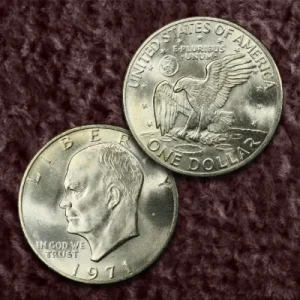
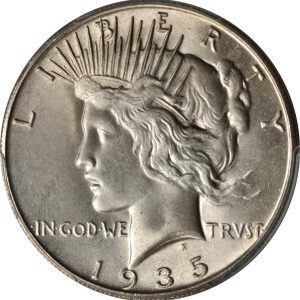
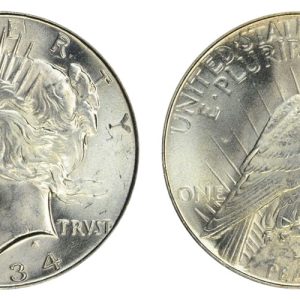
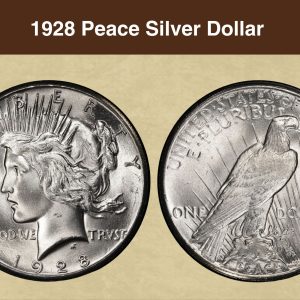
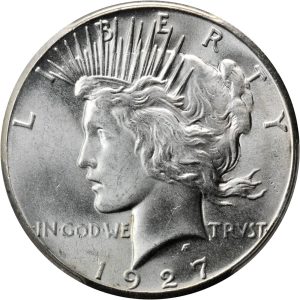
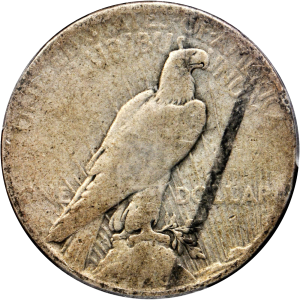
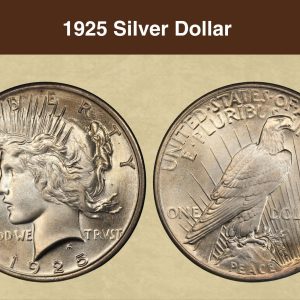
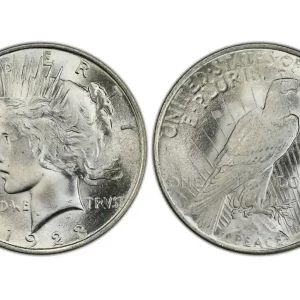
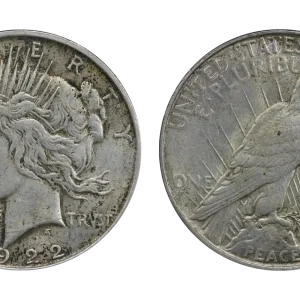
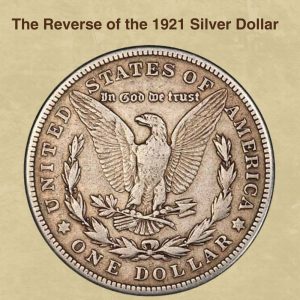
How much is a 1924 silver dollar worth with no mint mark?
A 1924 no-mint-mark silver dollar, also known as a 1924 Peace Dollar, is worth anywhere from around $45.50 to over $5,000, depending on its condition. Coins in circulated condition typically sell for $45.50–$57, while uncirculated, pristine examples can fetch up to $5,000 or more. The absence of a mint mark indicates it was minted in Philadelphia.
What makes a 1924 peace dollar rare?
As stated previously, Peace dollars were only made for a limited time and in limited quantities. The 1924 edition is sought after by coin collectors due to its historical significance, silver content and aesthetics. Because of these factors, the price for this coin regularly exceeds $30.
How much is a 1924 S Peace dollar worth?
A 1924-S Peace Dollar is worth significantly more than its silver content, with circulated examples valued between $45 and $60, while uncirculated grades can range from $350 to over $4,700 depending on the condition. The specific value depends heavily on the coin’s grade, with high-end specimens in mint state commanding prices in the thousands, and some even reaching tens of thousands of dollars.
What are the most sought after Peace dollars?
1924 S Peace Dollar: $8,200. 1934 S Peace Dollar: $8,000. 1927 S Peace Dollar: $6,200. 1927 D Peace Dollar: $4,250. 1928 Peace Dollar: $3,500. 1923 S Peace Dollar: $2,800. 1921 Peace Dollar: $1,600. 1935 S Peace Dollar: $1,350.